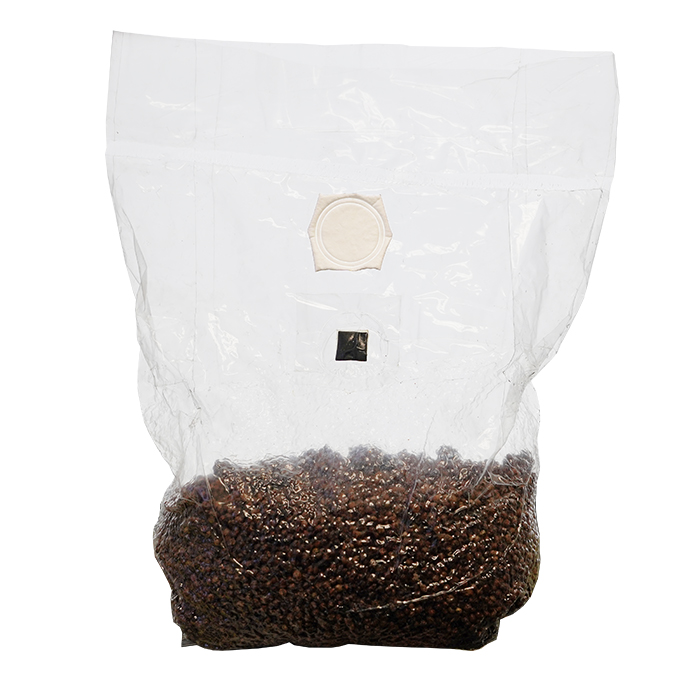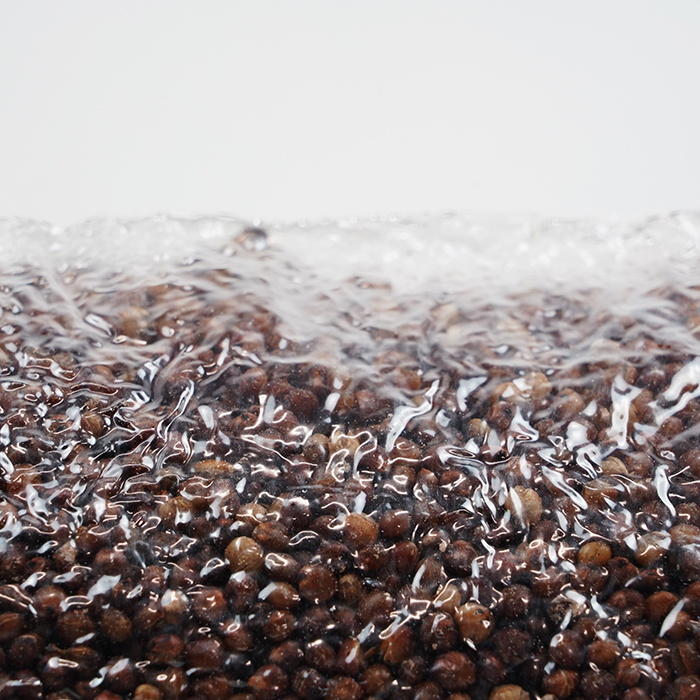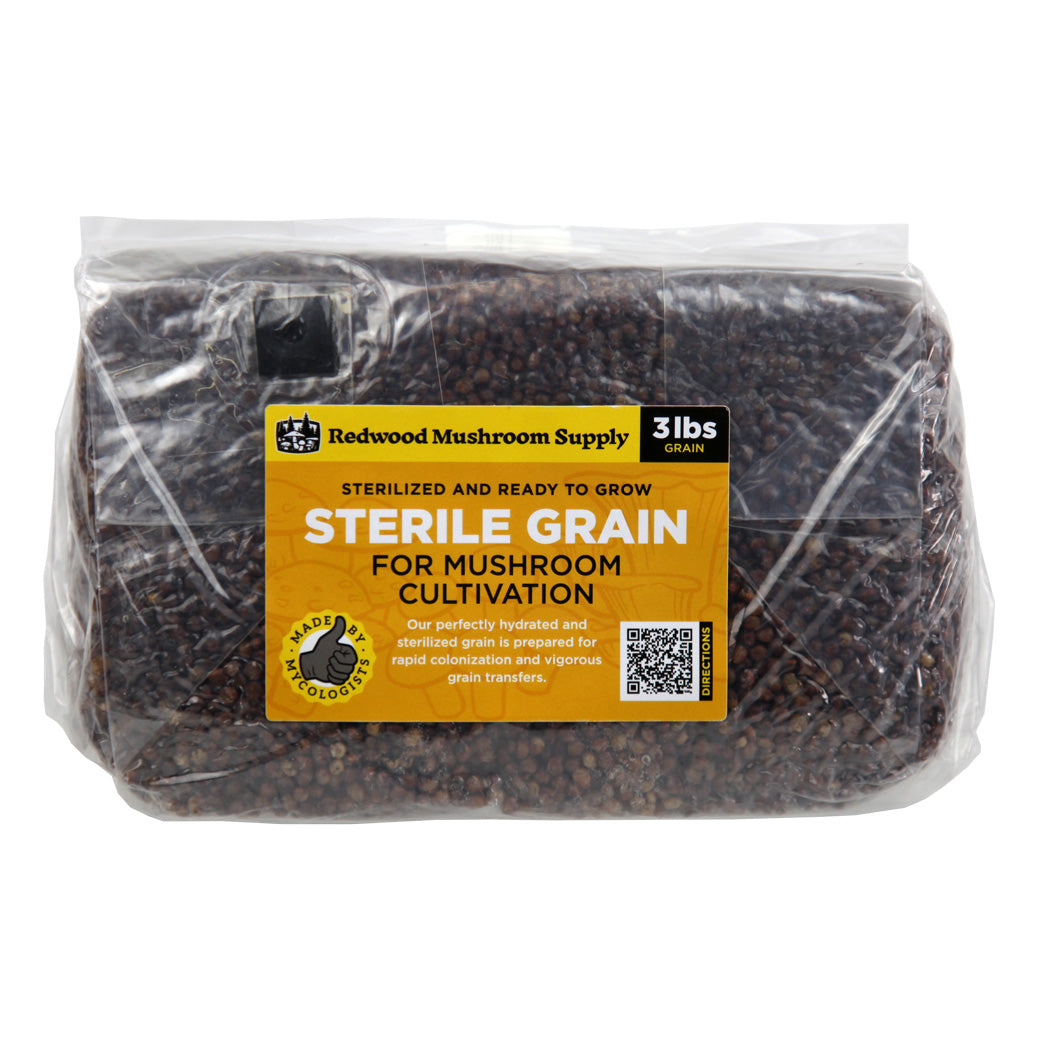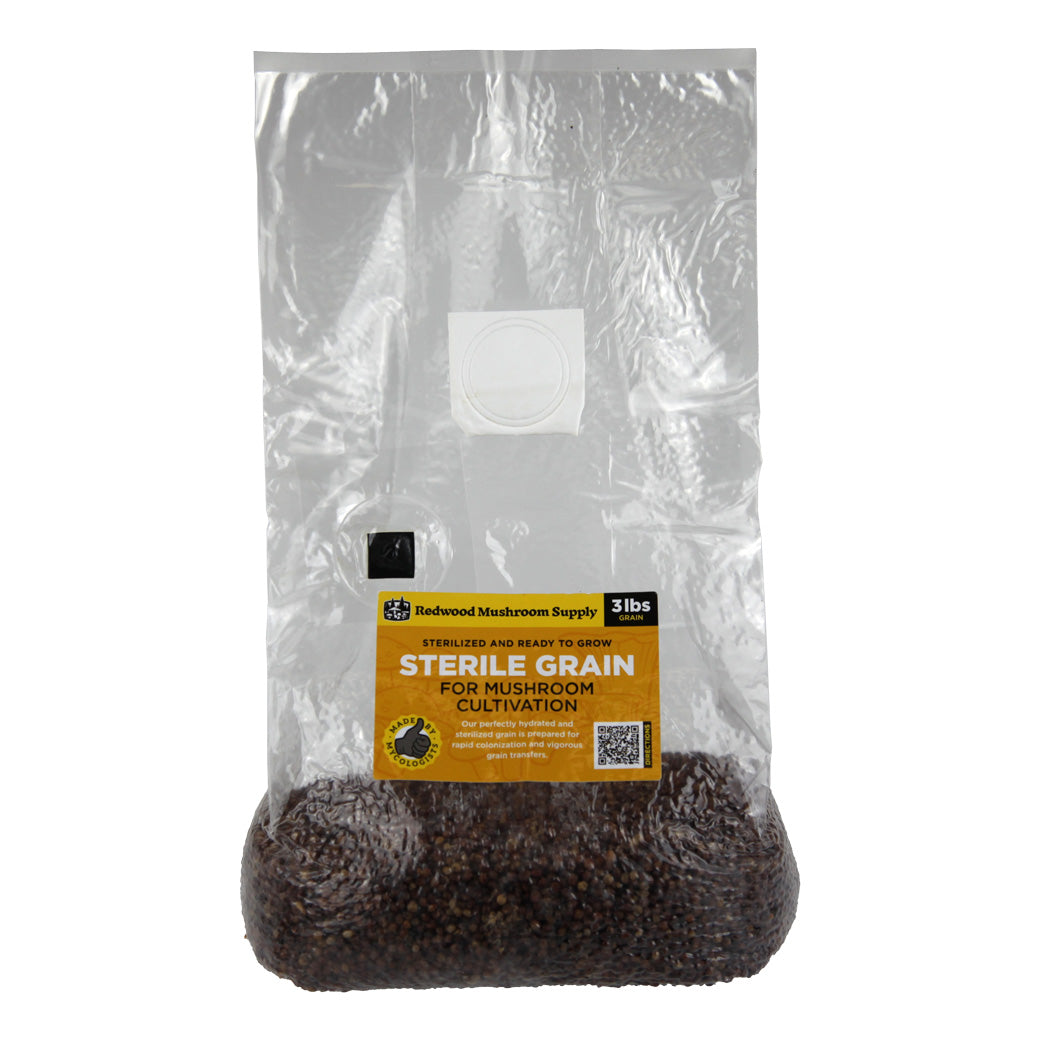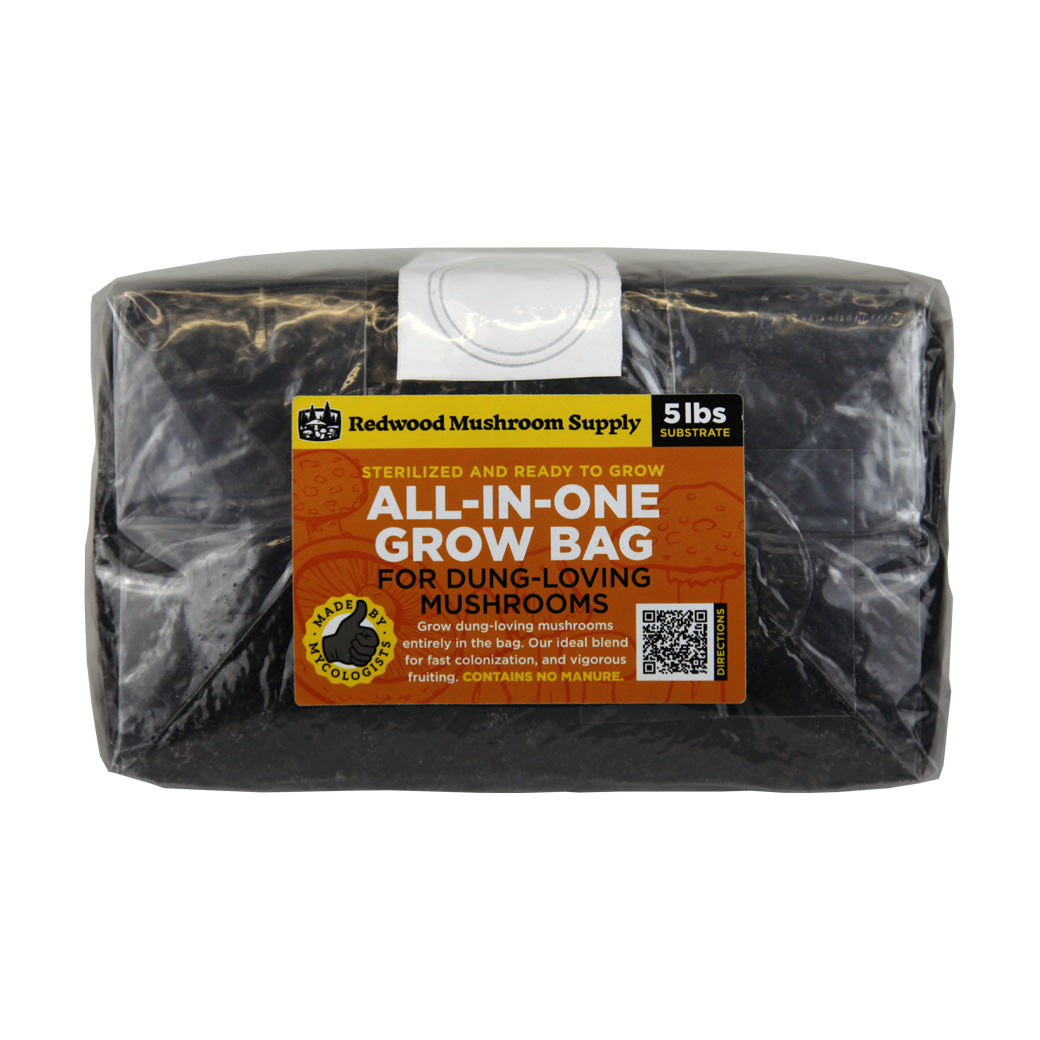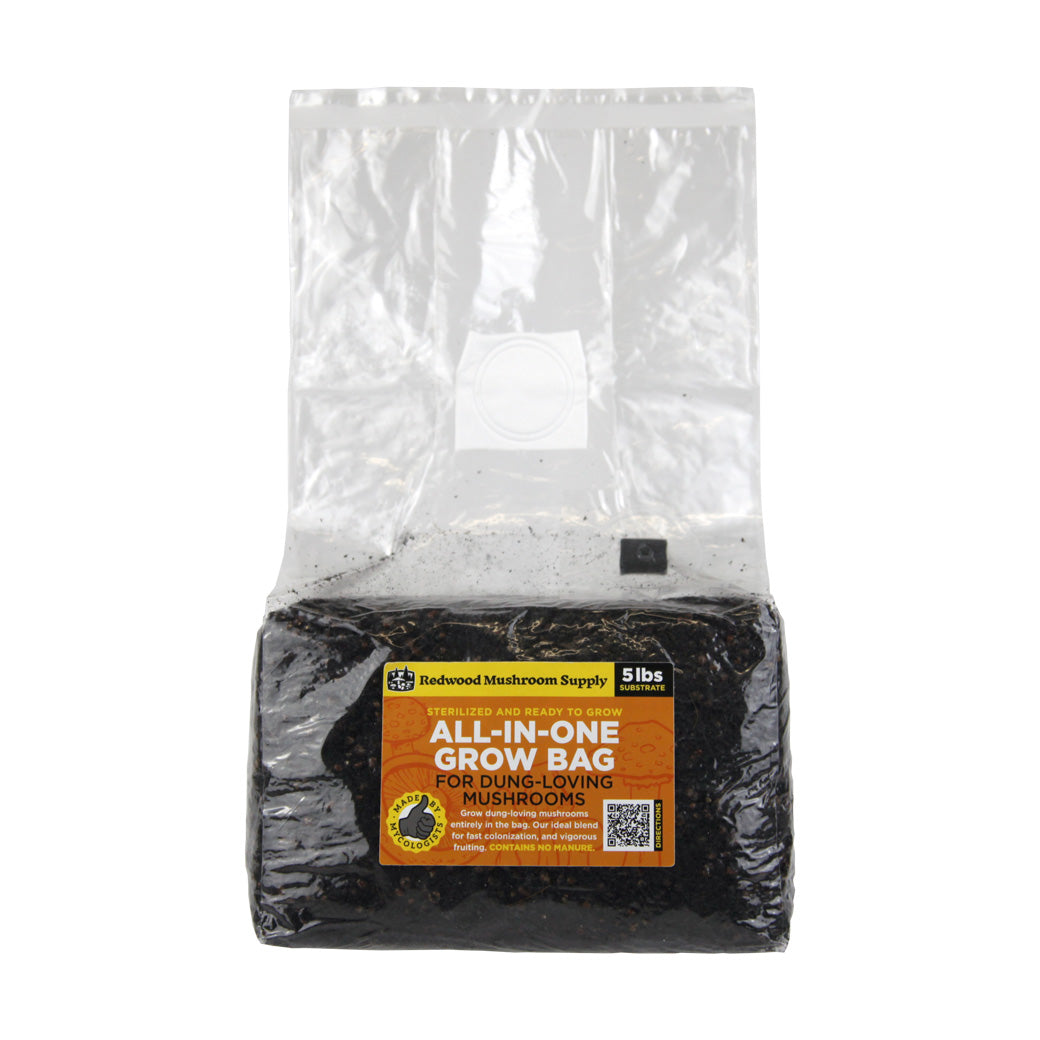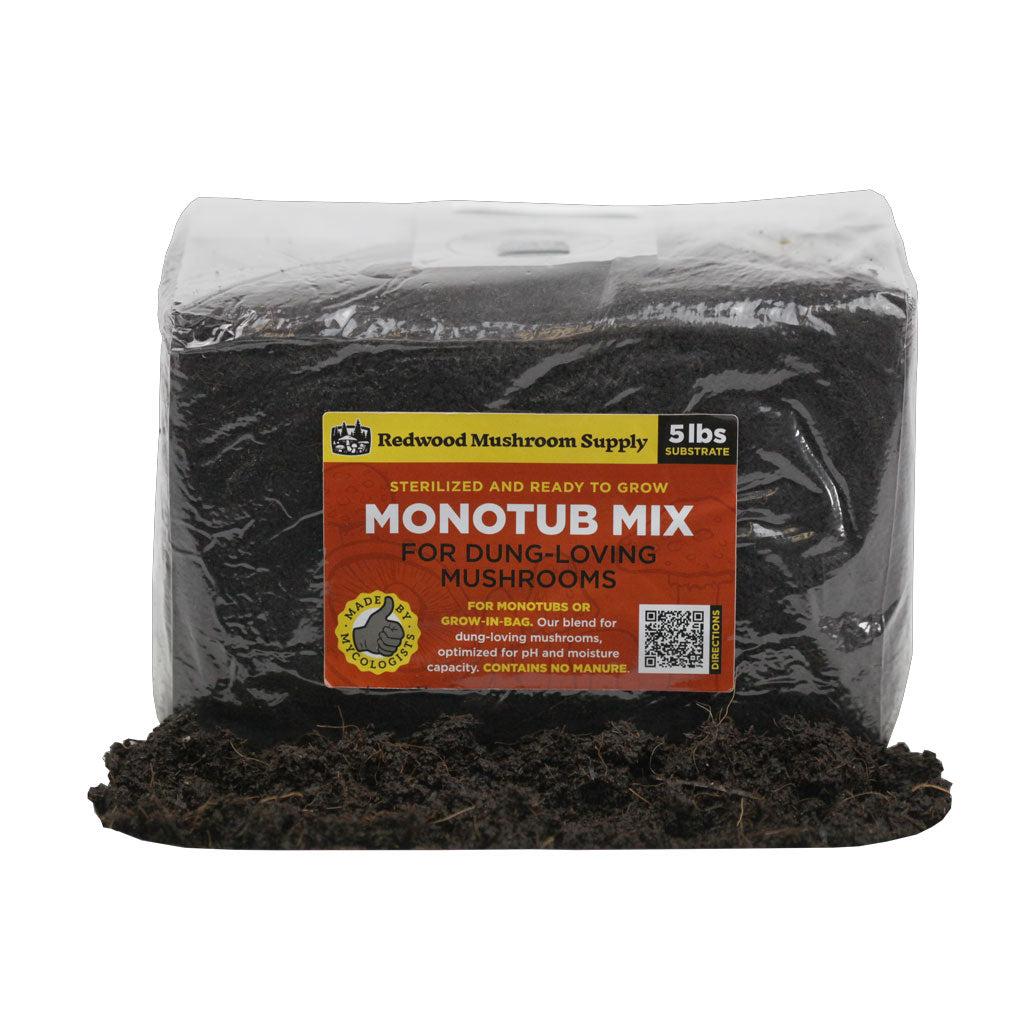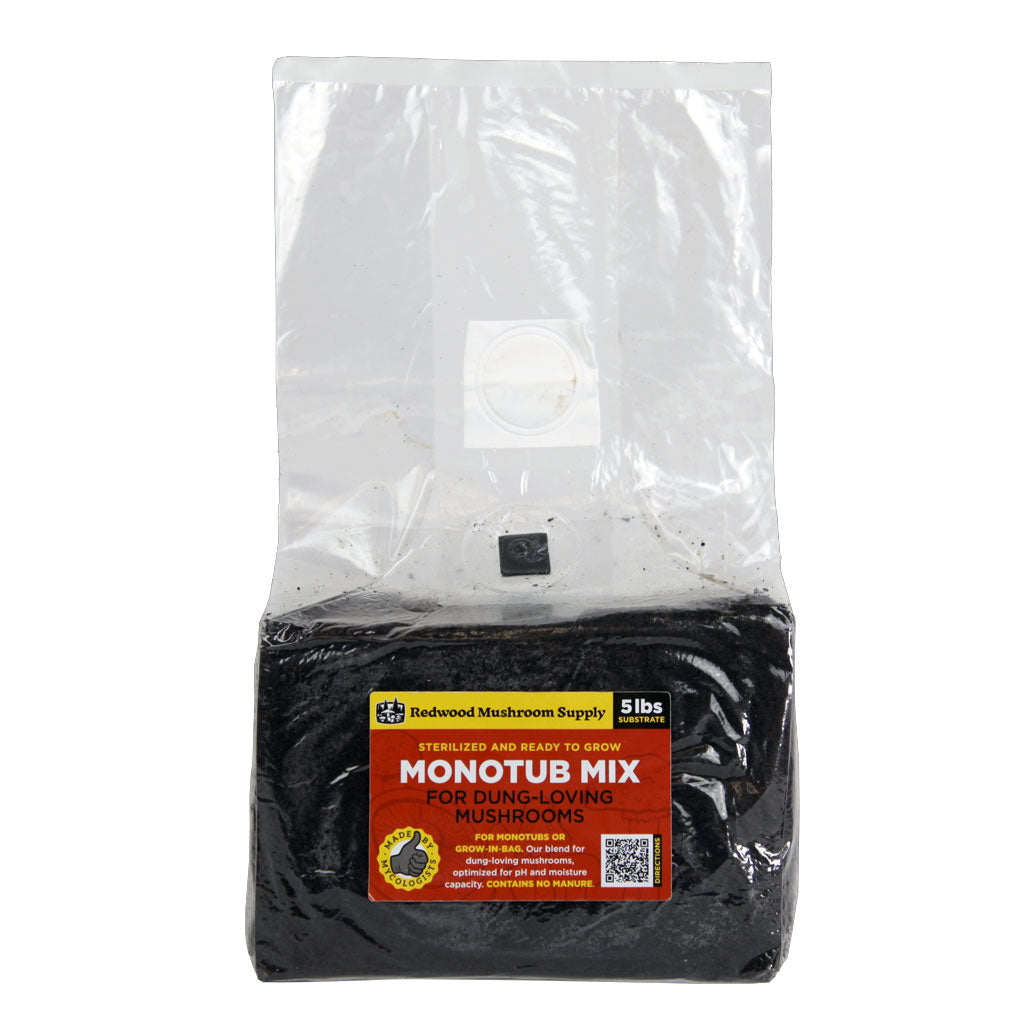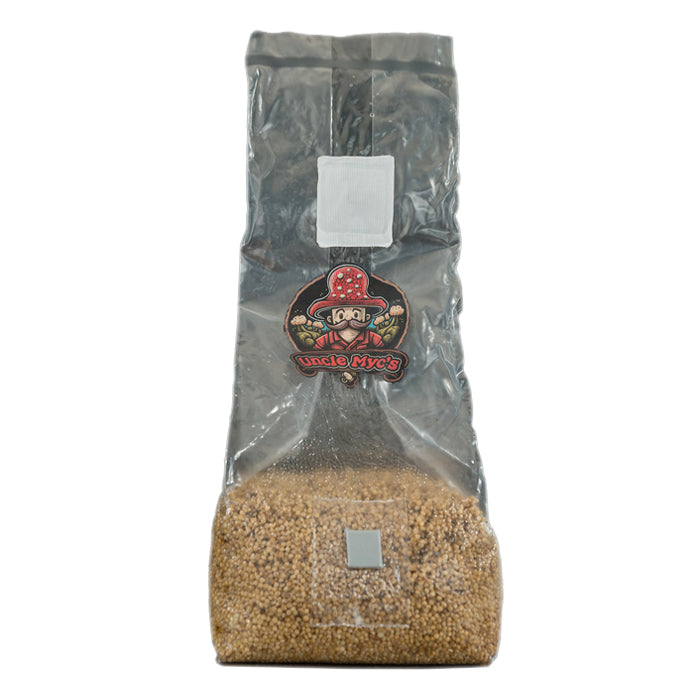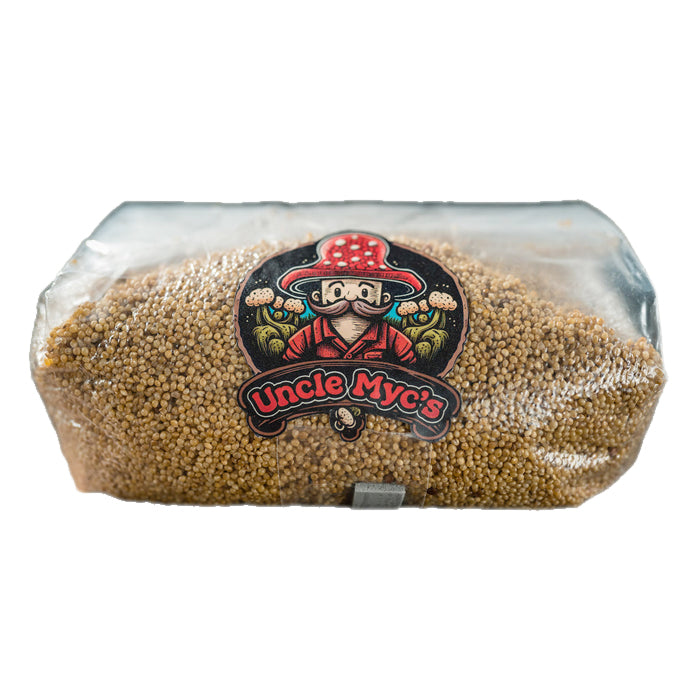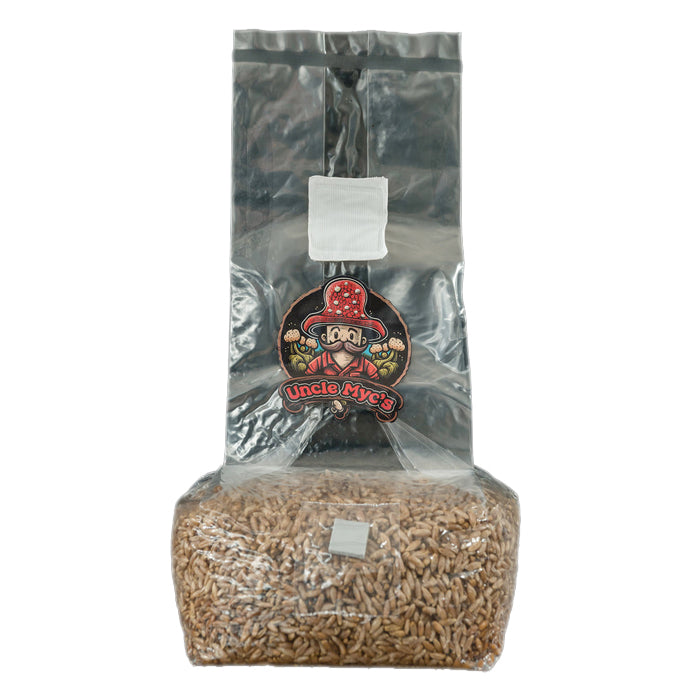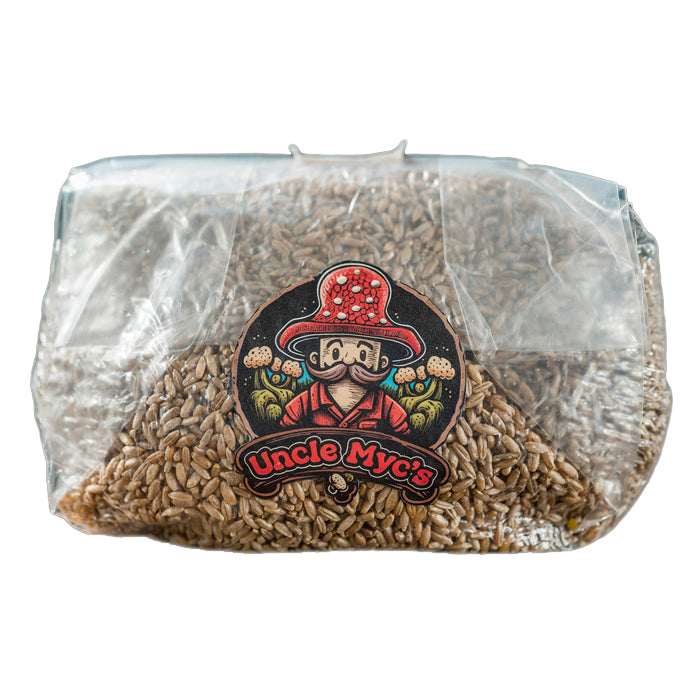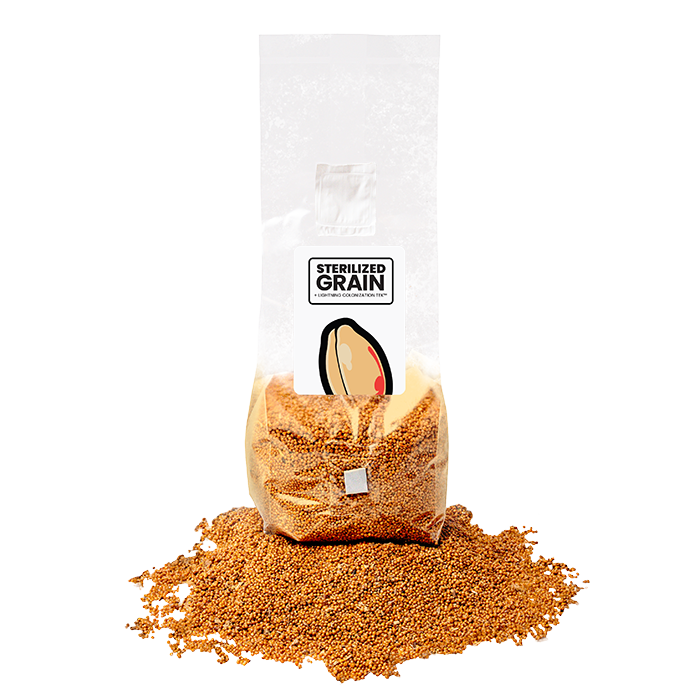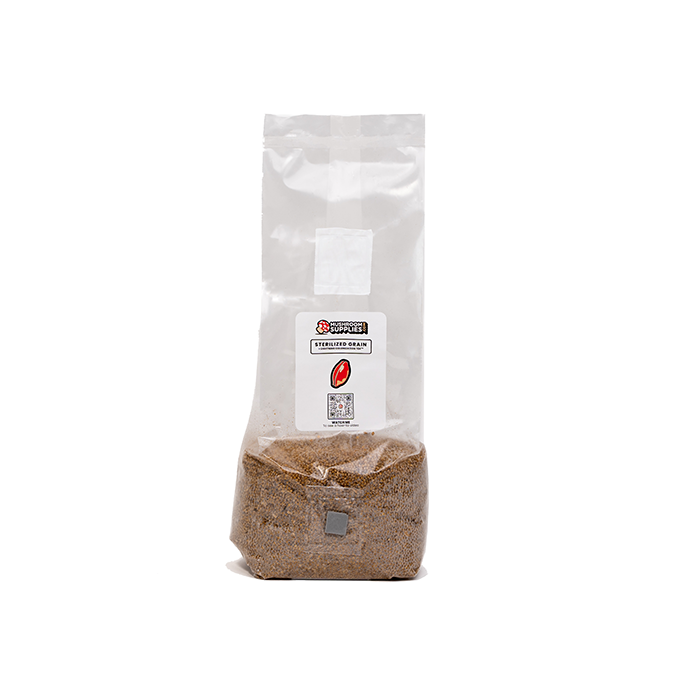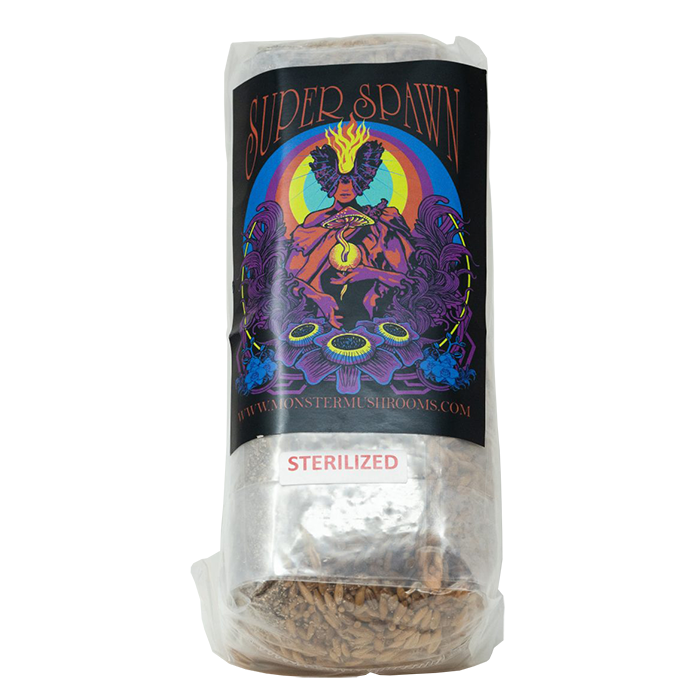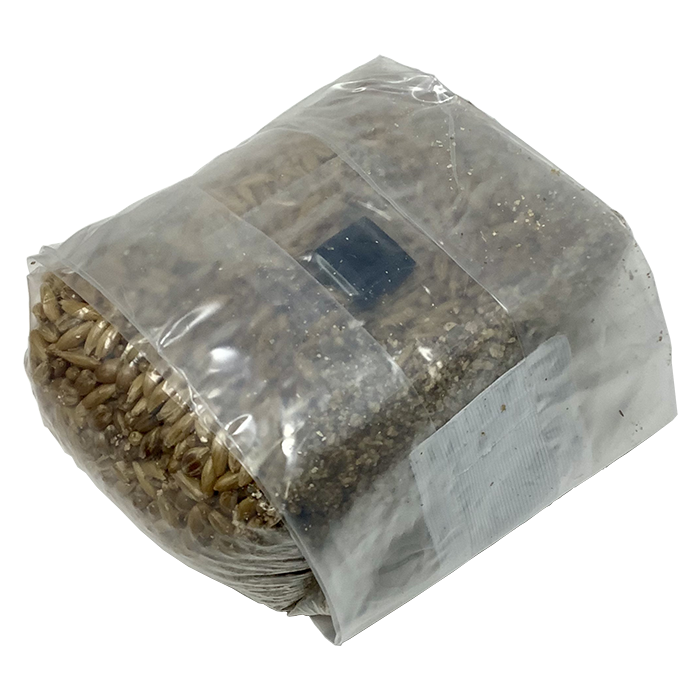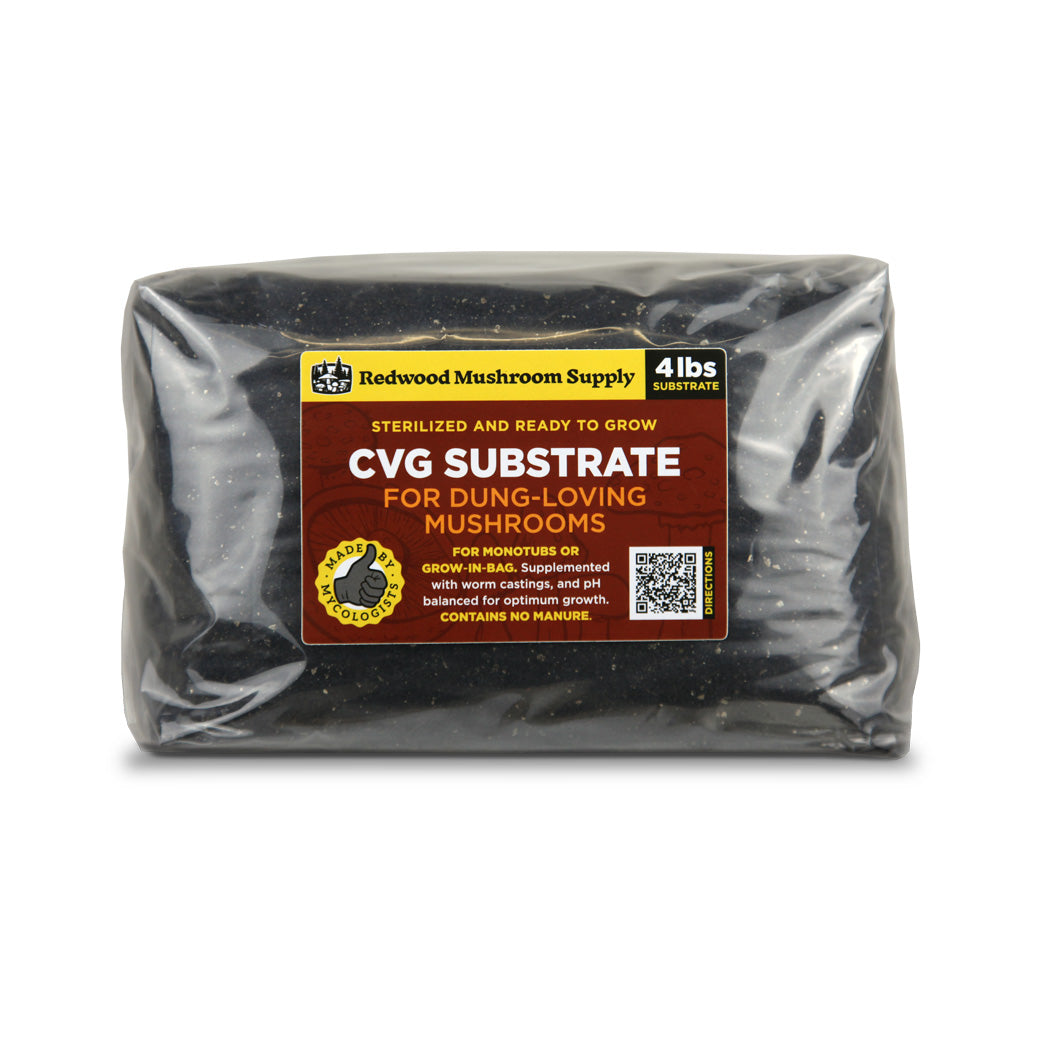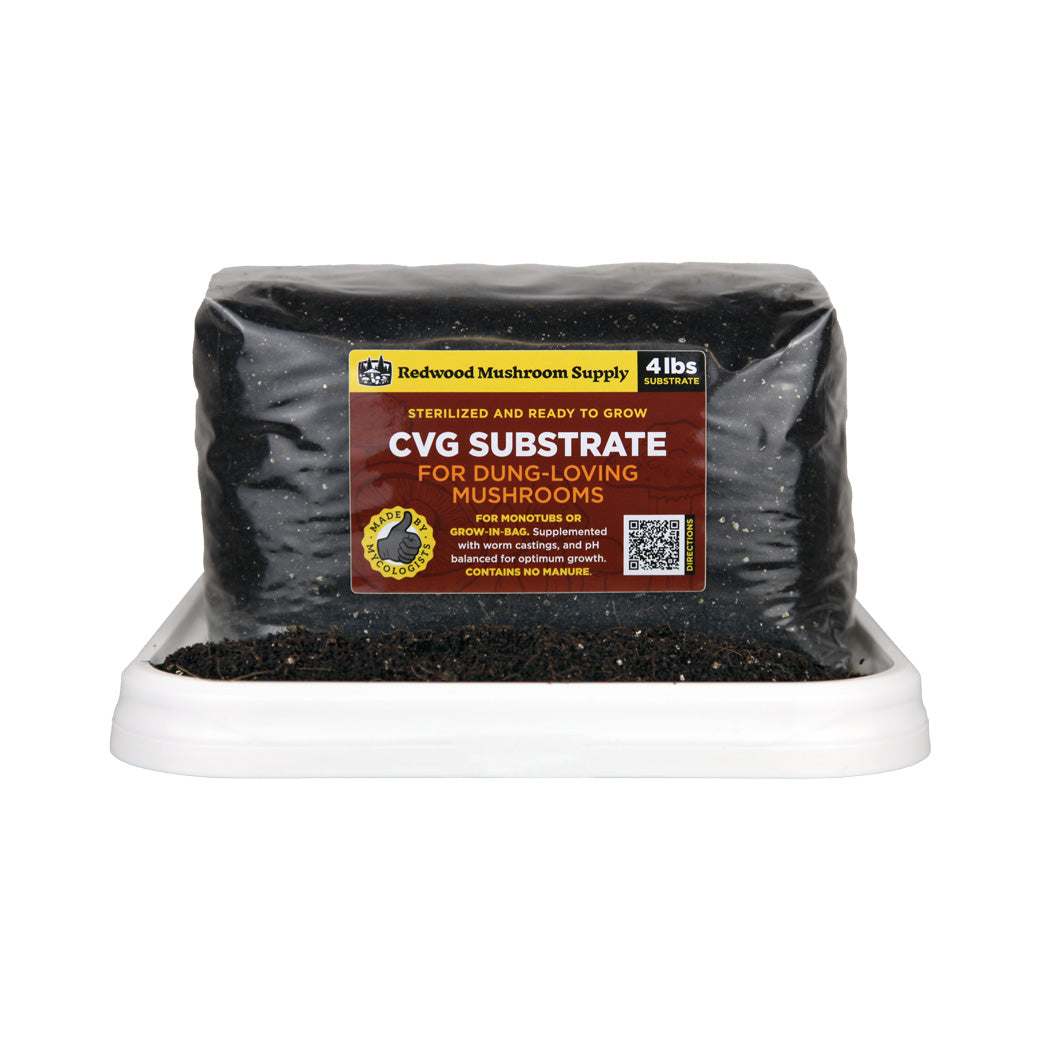What Is Grain Spawn
Mushroom grain spawn, or often just called “spawn” is the start for your mushroom to form. Mycelium or spores are injected into sterilized grain. From there the mycelium “spawns”.
The actual spawn is the living fungal culture, called mycelium, grown onto a substrate. The media used in mushroom cultivation is often called “spawn” itself for ease of reference.
How do I grow mushrooms from spores?
Grain spawn is the backbone to any mushroom grow. The grain can be thought of as your “soil” and the spores introduced can be thought of as the “seeds”.
First choose from your preferred variety of spores or a mushroom culture from your desired mushroom. These spores or cultures are injected directly into your sterilized grain medium. The mushroom mycelium then grows throughout the grain eating the starch and nutrients from the grain.
The mushroom spores will grow and fully colonize the grain, covering it in white mycelium. Your grain can then be broken up into individual pieces and mixed into a bulk substrate.
The mycelium will keep growing, eventually fruiting. The fruits are the mushrooms you see and eat.
What is the difference between mushroom spawn and mushroom substrate?
Simply put, spawn is the baby, or literal spawn of your mushroom grow. Substrate is the nutrient rich material that the spawn is transferred too once you see your mycelium taking off. Mushroom substrates can be anything from manures to mixes of various things like coco, vermiculite, gypsum.
Learn more about substrates here!
Why Does Grain Have to be Sterilized?
Grain is full of starch and sugars. It is highly nutritious and perfect for growing organisms. When in the right place, it is an ideal food source for young hungry mushroom mycelium.
This also means grains are an ideal environment for mold and bacteria to grow. These bad organisms usually grow much faster and stronger than the mycelium you’re intending to grow.
That is why sterilization of your grain is so important. The grain has to be completely sterilized in order to kill off anything unwanted. This will give your mycelium the ability to grow free of competition.
How Do I Sterilize My Grain Spawn?
Buying grain that’s already sterilized is usually the best and easiest choice. Some growers opt to sterilize things on their own. This is best done in a pressure cooker or autoclave. You can find our great selection of pressure cookers and autoclaves here!
The Many Types Of Grain Spawn
The best mushroom grain spawn is what you have at your disposal. Fortunately you can purchase mushroom spawn bags to make it easier on yourself. The only hard part is choosing which grian base you want! Below we’ll explore the different types of mushroom spawn.
RYE GRAIN
Rye grain is thought to be the best for mushroom spawn. Sometimes called “Rye Berries”, it has the ability to swell up 3 times its size without bursting. You can sterilize 3 times as much grain before starting your grow, saving you time and money in the long run. This also means an easier time keeping your grain spawn hydrated.
Rye Grain is also full of starch for your mycelium to eat up, and the large surface area promotes strong growth. The large surface gives more area for your mycelium to attach itself to.
WHEAT BERRIES
Wheat berries, also known as wheat grain or wheat seeds, are also an excellent choice. Wheat performs very similarly to rye. They can be prepared using the exact same method as rye grain and are packed full of food for your mycelium as well.
The biggest difference is that wheat cannot hold as much water, and is more likely to break when processed which is less cost effective. This also means you’ll need to stay on top hydrating your spawn a little more. There’s nothing wrong with having a little more facetime with your mushrooms though, right?
MILLET
Millet is on the smaller end of the grains but still offers many different “inoculation” points in your substrate. Millet is most often mixed with other grains to make spawn maximizing its potential.
BARLEY
Barley is yet another cereal grain that works for spawn. It is a lot less favored though as the barley grain has a tendency to get mushy. Mushy grain is harder for the mycelium to travel through.
SORGHUM
Sorghum is typically used in animal feed but can make a great grain spawn. Commercial spawn producers can get non-human grade sorghum grain cheaply to be turned into spawn.
BROWN RICE
Brown rice can get mushy/sticky if over processed so it is typically not used by commercial growers. Hobby growers however love brown rice due to it being cheap. Some people even inoculate their spores into microwave rice packets you buy at the store!
POPCORN
Popcorn is also another decent option. Its main benefit is how easy it is to get. Unfortunately it's also generally more costly and has a slower colonization rate than other grains. Larger “gaps” between kernels results in the mycelium needing to stretch and reach to grow.
If you have any questions or are interested in finding out more about our products, give us a call! Our master growers are always ready and happy to help. Call 888-815-9763!
